-
Top Professional Products



-
Professional Articles
- Caries
- Dry Mouth
- Enamel Erosion
- Gum Issues
- Orthodontics
- Pediatric
- Sensitivity
- Whitening
- Social Responsibility
- Career Development
Try the new Colgate dental stuDENT app today

-
Gum Health Physical Tool
Assess your patients' gum health in your office using this tool and send them home with a personalized report.

-
Science & Innovation
- Science & Innovation
- Innovation Experts
- Quality Safety & Ingredients
- Ingredients A-Z
- Scientific Evidence
Oral Health Commitment
- Oral Health Commitment
- Bright Smiles, Bright Futures
- Educational Resources
- Mobile Dental Van
- Volunteer
Colgate Prevident
Colgate® PreviDent® 5000 ppm Sensitive (1.1% Sodium Fluoride, 5% Potassium Nitrate), Mild Mint






Colgate Prevident
Colgate® PreviDent® 5000 ppm Sensitive (1.1% Sodium Fluoride, 5% Potassium Nitrate), Mild Mint
Benefits
Prevident® 5000 Sensitive toothpaste is a low abrasion toothpaste for sensitive teeth. This prescription toothpaste relieves sensitivity in teeth and prevent cavities that is to be used once daily, followed by rinsing. Helps reduce the painful sensitivity of the teeth to cold, heat, acids, sweets or contact in adult patients and children 12 years of age and older.
PreviDent® 5000 Sensitive (Rx) brand of 1.1% sodium fluoride toothpaste with 5% potassium nitrate in a liquid gel bottle and is easily applied onto a toothbrush.
Characteristics
- 5% potassium nitrate
- Significant remineralization of root caries in as little as 3 months (38%) and 6 months (57%)
- Mild mint flavor
*Among 5000 ppm NaF toothpastes.
1. Baysan A et al. Reversal of primary root caries using dentifrice containing 5,000 and 1,100 ppm fluoride. Caries Res. 2001;35:41-46.
- Enables faster fluoride dispersion than paste-form Rx toothpaste
- Clinically proven sensitivity relief
- Therapeutic decay prevention safe for exposed root surfaces
- Low abrasion level
A dental caries preventive and sensitive teeth toothpaste; for twice daily self-applied topical use, followed by rinsing. Helps reduce the painful sensitivity of the teeth to cold, heat, acids, sweets or contact in adult patients and children 12 years of age and older. It is well established that 1.1% sodium fluoride is safe and extraordinarily effective as a caries preventive when applied frequently with mouthpiece applicators. 1-4 PreviDent® 5000 Sensitive brand of 1.1% sodium fluoride toothpaste with 5% potassium nitrate in a squeeze bottle is easily applied onto a toothbrush. This prescription toothpaste should be used twice daily in place of your regular toothpaste unless otherwise instructed by your dental professional. May be used in areas where drinking water is fluoridated since topical fluoride cannot produce fluorosis. (See WARNINGS for exception.)
Contraindications: Do not use in pediatric patients under age 12 years unless recommended by a dentist or physician.
Warnings: Not for systemic treatment - DO NOT SWALLOW. Keep out of reach of infants and children. Children under 12 years of age, consult a dentist or physician.
Note: Sensitive teeth may indicate a serious problem that may need prompt care by a dentist. See your dentist if the problem persists or worsens. Do not use this product longer than 4 weeks unless recommended by a dentist or physician.
Precautions:
Carcinogenesis, Mutagenesis, Impairment of Fertility: In a study conducted in rodents, no carcinogenesis was found in male and female mice and female rats treated with fluoride at dose levels ranging from 4.1 to 9.1 mg/kg of body weight. Equivocal evidence of carcinogenesis was reported in male rats treated with 2.5 and 4.1 mg/kg of body weight. In a second study, no carcinogenesis was observed in rats, males or females, treated with fluoride up to 11.3 mg/kg of body weight. Epidemiological data provide no credible evidence for an association between fluoride, either naturally occurring or added to drinking water, and risk of human cancer.
Fluoride ion is not mutagenic in standard bacterial systems. It has been shown that fluoride ion has potential to induce chromosome aberrations in cultured human and rodent cells at doses much higher than those to which humans are exposed. In vivo data are conflicting. Some studies report chromosome damage in rodents, while other studies using similar protocols report negative results.
Potential adverse reproductive effects of fluoride exposure in humans has not been adequately evaluated. Adverse effects on reproduction were reported for rats, mice, fox, and cattle exposed to 100 ppm or greater concentrations of fluoride in their diet or drinking water. Other studies conducted in rats demonstrated that lower concentrations of fluoride (5 mg/kg of body weight) did not result in impaired fertility and reproductive capabilities.
Pregnancy – Teratogenic Effects: Pregnancy Category B. It has been shown that fluoride crosses the placenta of rats, but only 0.01% of the amount administered is incorporated in fetal tissue. Animal studies (rats, mice, rabbits) have shown that fluoride is not a teratogen. Maternal exposure to 12.2 mg fluoride/kg of body weight (rats) or 13.1 mg/kg of body weight (rabbits) did not affect the litter size or fetal weight and did not increase the frequency of skeletal or visceral malformations. There are no adequate and well-controlled studies in pregnant women. However, epidemiological studies conducted in areas with high levels of naturally fluoridated water showed no increase in birth defects. Heavy exposure to fluoride during in utero development may result in skeletal fluorosis which becomes evident in childhood.
Nursing Mothers: It is not known if fluoride is excreted in human milk. However, many drugs are excreted in milk, and caution should be exercised when products containing fluoride are administered to a nursing woman. Reduced milk production was reported in farm-raised fox when the animals were fed a diet containing a high concentration of fluoride (98-137 mg/kg of body weight). No adverse effects on parturition, lactation, or offspring were seen in rats administered fluoride up to 5 mg/kg of body weight.
Pediatric Use: Safety and effectiveness in pediatric patients below the age of 12 years have not been established. Please refer to the CONTRAINDICATIONS and WARNINGS sections.
Geriatric Use: Of the total number of subjects in clinical studies of 1.1% (w/v) sodium fluoride, 15 percent were 65 and over, while 1 percent were 75 and over. No overall differences in safety or effectiveness were observed between these subjects and younger subjects, and other reported clinical experience has not identified differences in responses between the elderly and younger patients, but greater sensitivity of some older individuals cannot be ruled out. This drug is known to be substantially excreted by the kidney, and the risk of toxic reactions to this drug may be greater in patients with impaired renal function. Because elderly patients are more likely to have decreased renal function, care should be taken in dose selection, and it may be useful to monitor renal function.5
Adverse Reactions: Allergic reactions and other idiosyncrasies have been rarely reported.
Overdosage: Accidental ingestion of large amounts of fluoride may result in acute burning in the mouth and sore tongue. Nausea, vomiting, and diarrhea may occur soon after ingestion (within 30 minutes) and are accompanied by salivation, hematemesis, and epigastric cramping abdominal pain. These symptoms may persist for 24 hours. If less than 5 mg fluoride/kg body weight (i.e., less than 2.3 mg fluoride/lb body weight) have been ingested, give calcium (e.g., milk) orally to relieve gastrointestinal symptoms and observe for a few hours. If more than 5 mg fluoride/kg body weight (i.e., more than 2.3 mg fluoride/lb body weight) have been ingested, induce vomiting, give orally soluble calcium (e.g., milk, 5% calcium gluconate or calcium lactate solution) and immediately seek medical assistance. For accidental ingestion of more than 15 mg fluoride/kg of body weight (i.e., more than 6.9 mg fluoride/lb body weight), induce vomiting and admit immediately to a hospital facility.
A treatment dose (a thin ribbon) of PreviDent® 5000 Sensitive (Rx) contains approximately 2.5 mg fluoride. A 3.38 fl. oz. (100 mL) bottle contains approximately 572.5 mg fluoride.
Dosage and Administration: Follow these instructions unless otherwise instructed by your dental professional:
Adults and children 12 years of age and older: Apply at least a 1 inch strip of PreviDent 5000 Sensitive (Rx) onto a soft bristle toothbrush. Brush teeth thoroughly for at least 1 minute, expectorate, and rinse mouth thoroughly. Use once daily or as recommended by a dentist or physician. Make sure to brush all sensitive areas of the teeth.
Children under 12 years of age: Consult a dentist or physician.
Storage: Store at controlled room temperature, 20-25°C (68-77°F)
Reference:
- American Dental Association, Accepted Dental Therapeutics Ed. 40 (Chicago, 1984): 405-407.H.R.
- Englander et al., JADA 75 (1967): 638-644.H.R.
- Englander et al., JADA 78 (1969): 783-787.H.R.
- Englander et al., JADA 83 (1971): 354-358.
- Data on file, Colgate Oral Pharmaceuticals.
IMPORTANT SAFETY INFORMATION: Do not swallow. Keep out of reach of children. Do not use in pediatric patients under age of 12 unless recommended by a dentist or physician. Acute burning in the mouth and sore tongue may be experienced by some individuals. If accidental ingestion occurs, side effects may include nausea, vomiting, diarrhea, and abdominal pain. See Package Insert for additional safety information.
Related Products
Prescription Products

Colgate® PreviDent® Varnish is an in-office treatment for sensitive teeth. Contact your dentist today!
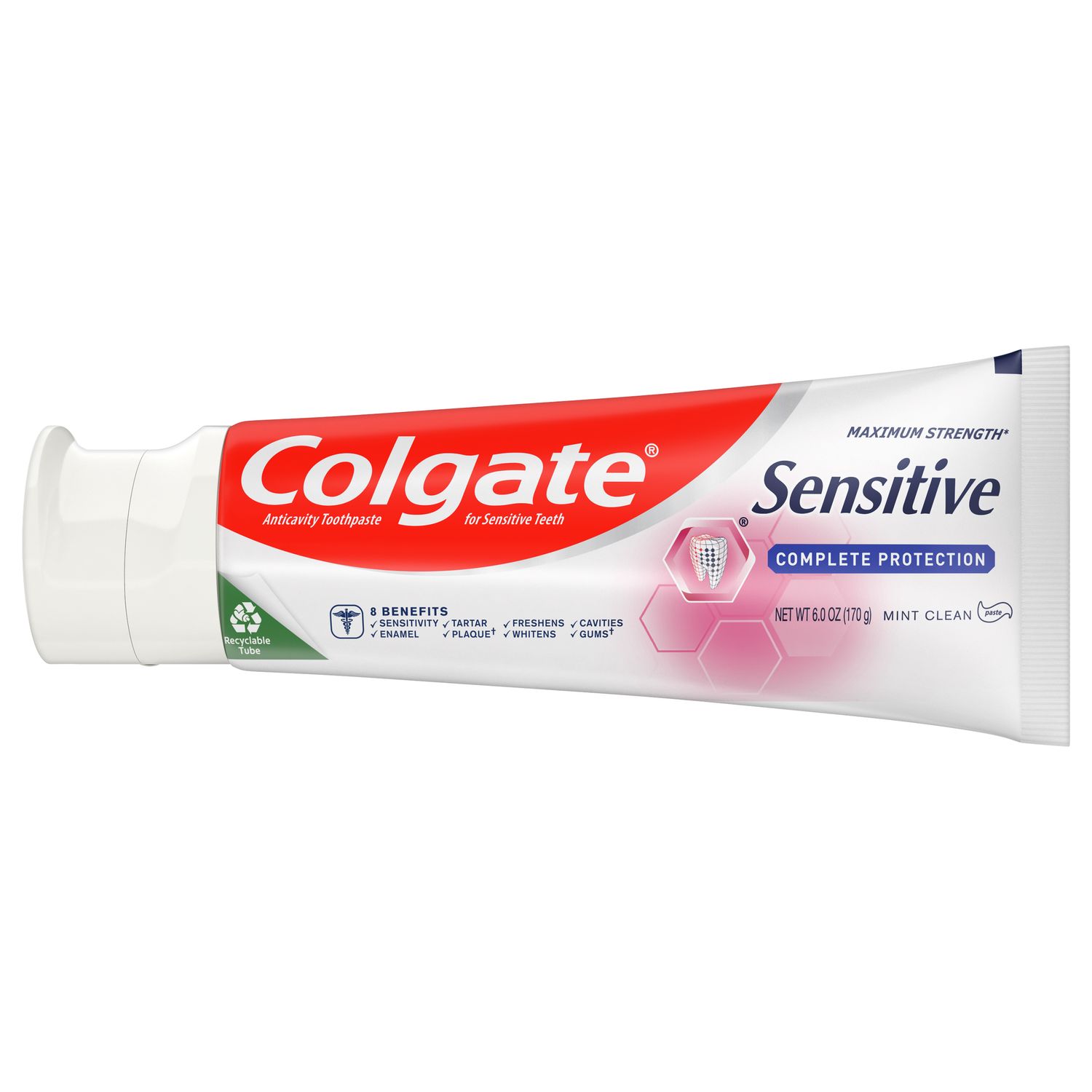
Colgate® Sensitive Complete Protection Toothpaste provides 24/7 sensitivity protection with twice daily brushing and was developed to help protect against cavities, fight tartar and remove plaque with regular brushing.
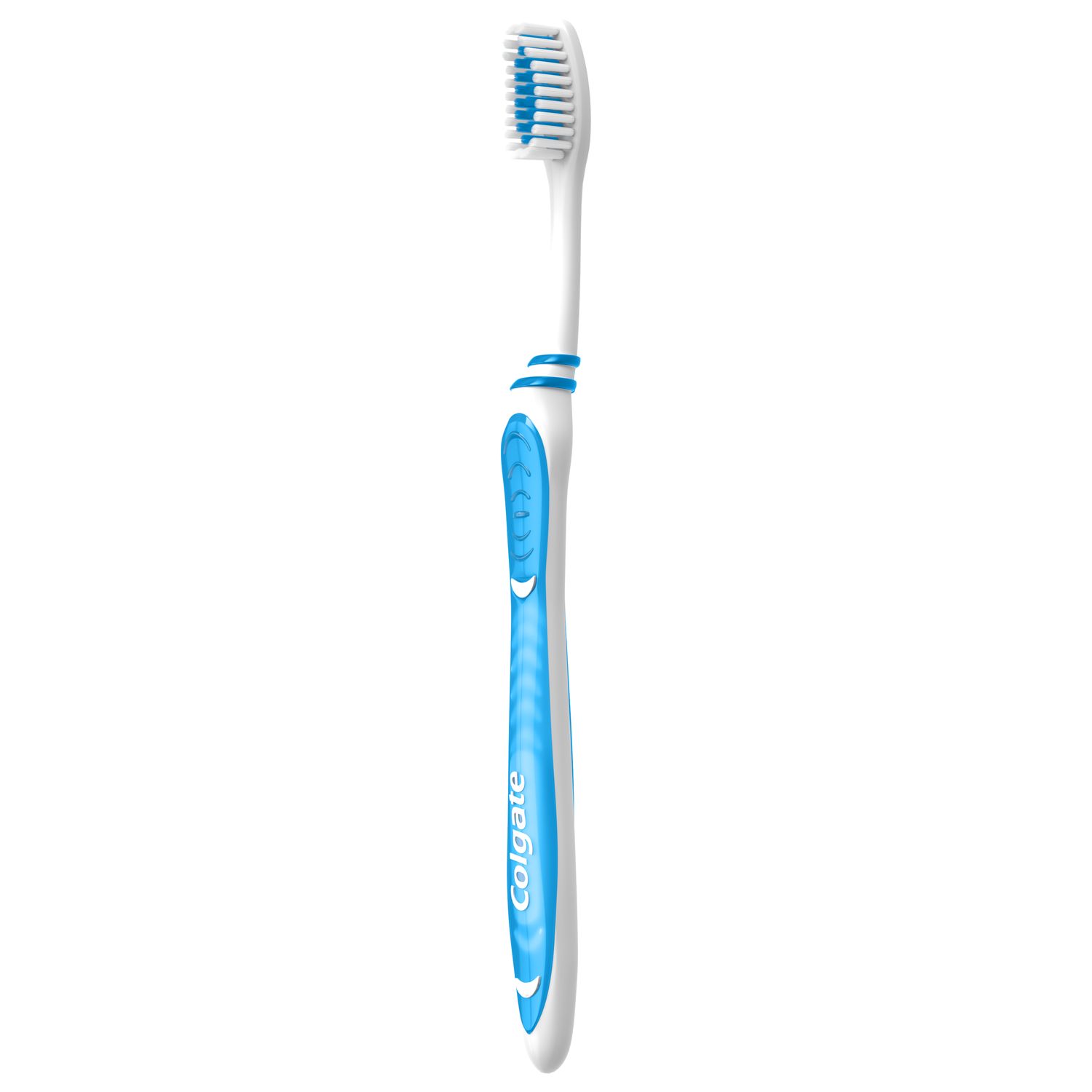
The Colgate® Wave Gum Comfort Toothbrush is designed for patients with sensitive gums who experience gum pain while brushing.

Colgate® 360°® Fresh 'N Protect manual toothbrush is perfect for older kids with changing teeth, and is designed with a cool cheek and tongue cleaner that helps remove more plaque and stains than an ordinary toothbrush.
Prescription Products
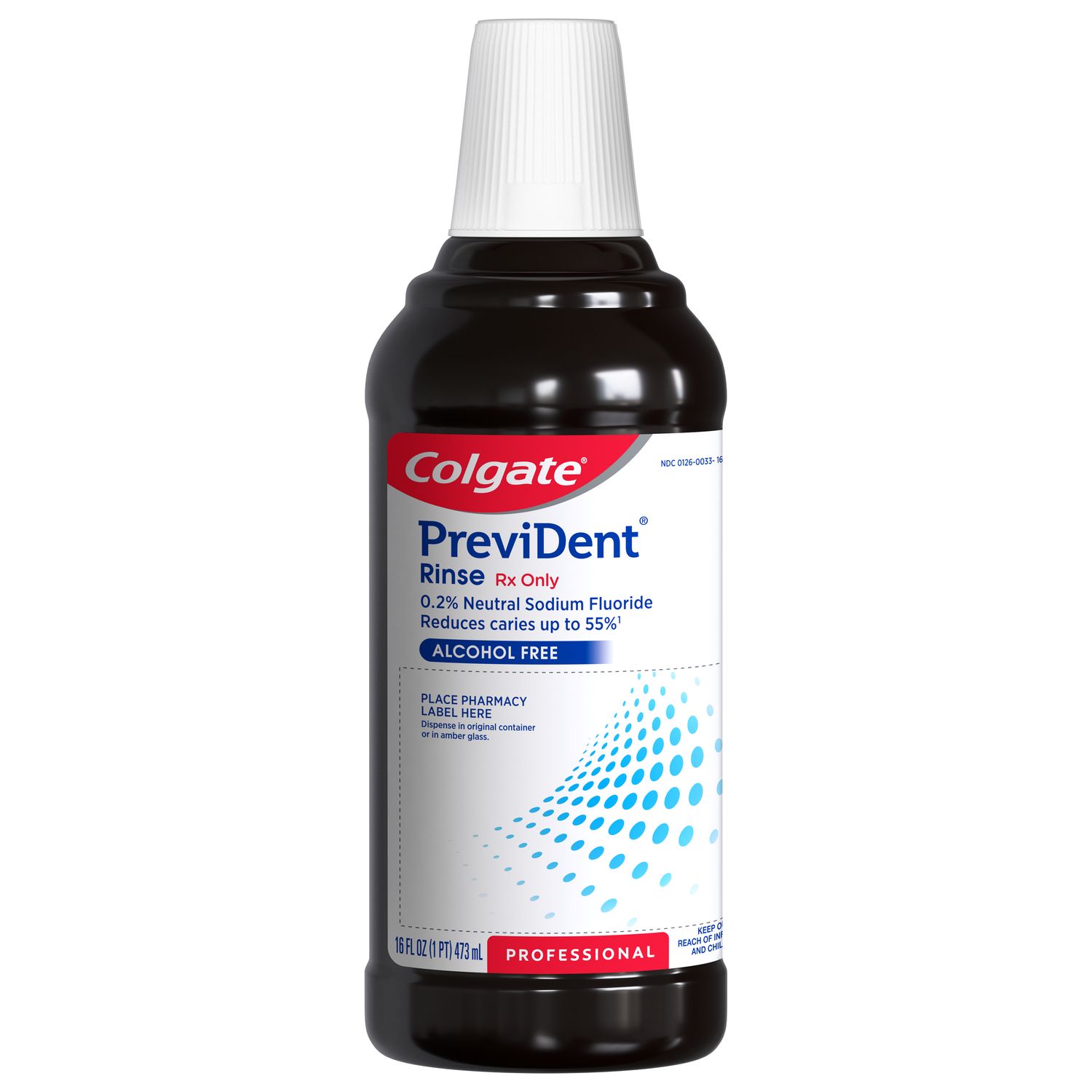
Colgate® PreviDent® Oral Rinse is prescription-strength, with extra fluoride to help decrease cavities for people who have trouble brushing.
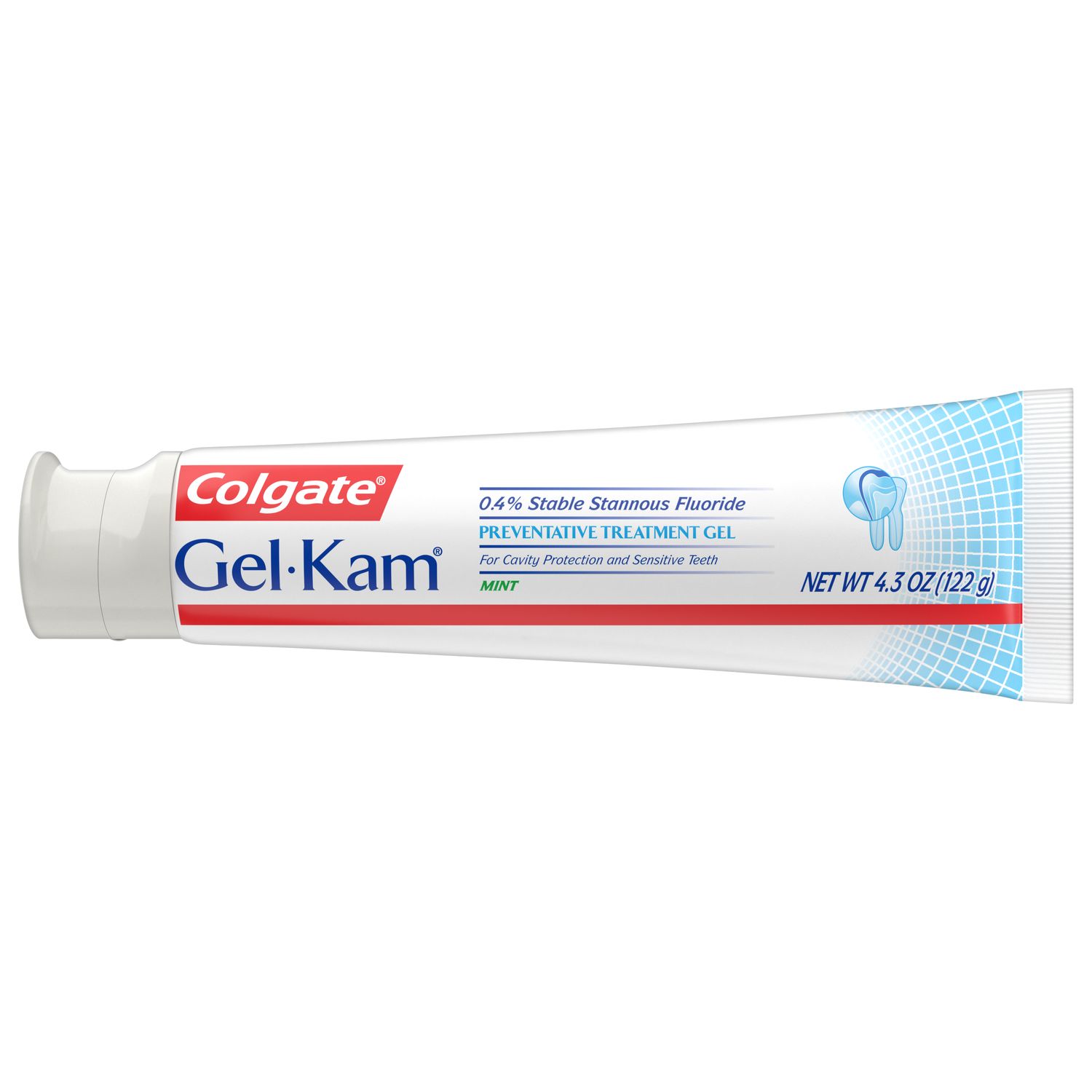
Colgate® Gel-Kam Preventative Treatment Gel prevents cavities and treats sensitive teeth with a clinically proven fluoride formula. Try it today!
Prescription Products
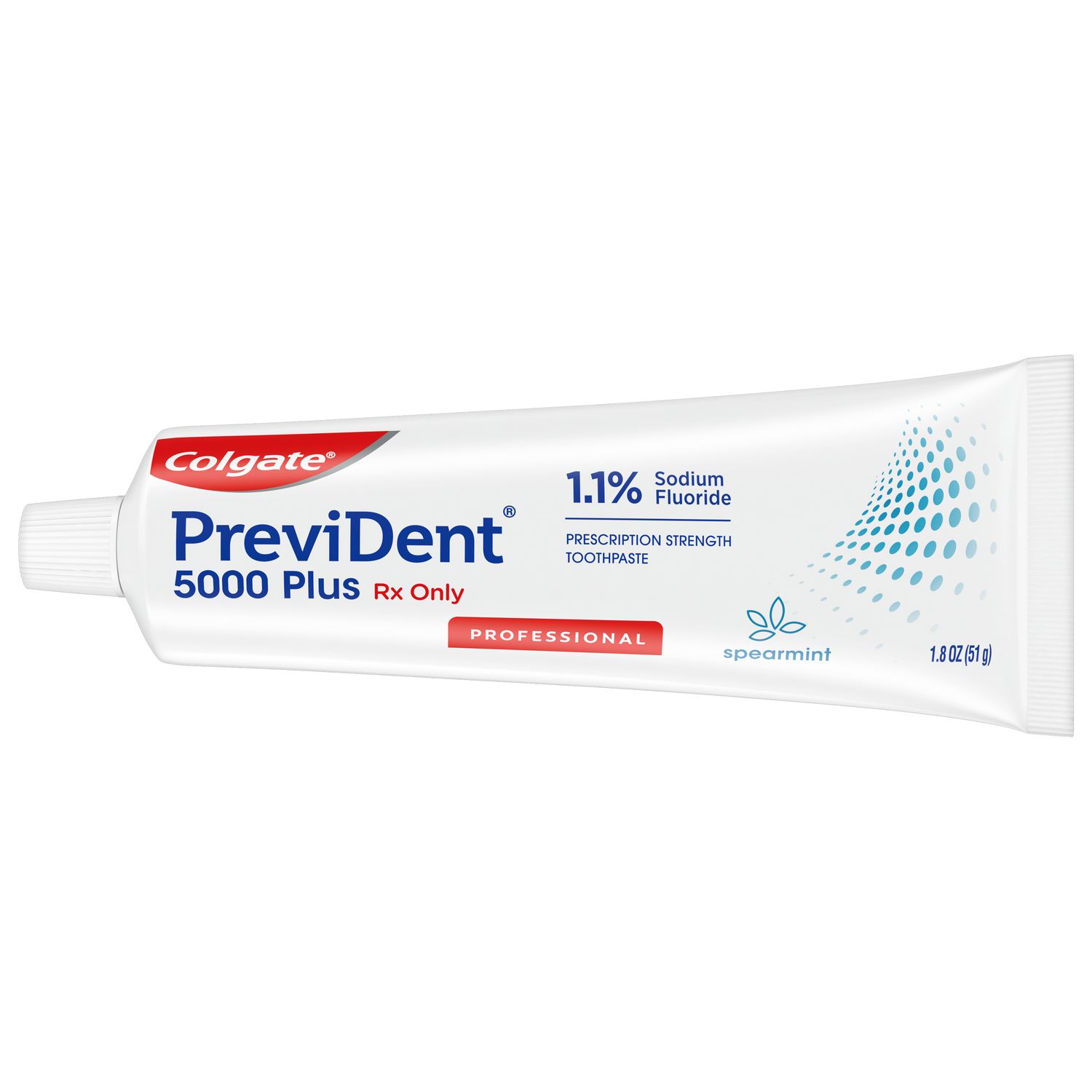
Colgate® PreviDent® 5000 Plus Prescription Toothpaste delivers 4x the fluoride than over-the-counter toothpastes & rinses. Contact your your dentist today!
Prescription Products

Colgate® PreviDent® Gel is an at-home, Rx Only brush-on gel treatment for those that require extra-strength fluoride protection. Contact your your dentist today!

Provide the Ultimate Protection for Patients
Whether patients are in the office or at home, Colgate PreviDent® prescription fluoride products provide the maximum cavity protection they need.

Gum Health Physical Tool
Assess your patients' gum health in your office using this tool and send them home with a personalized report.


